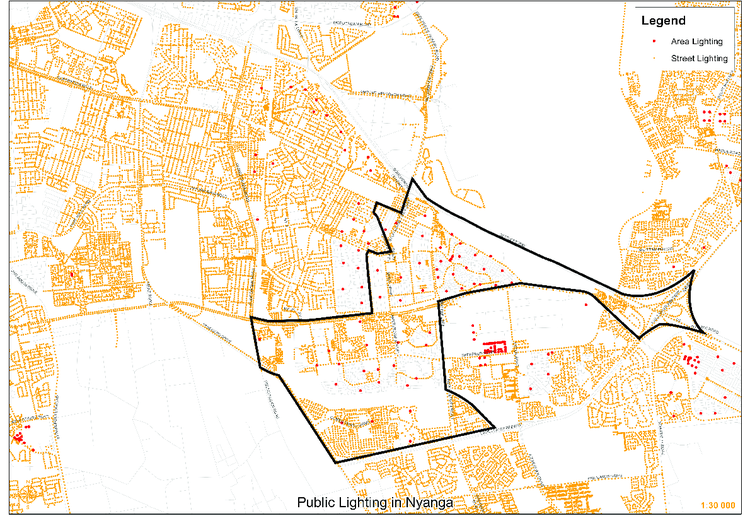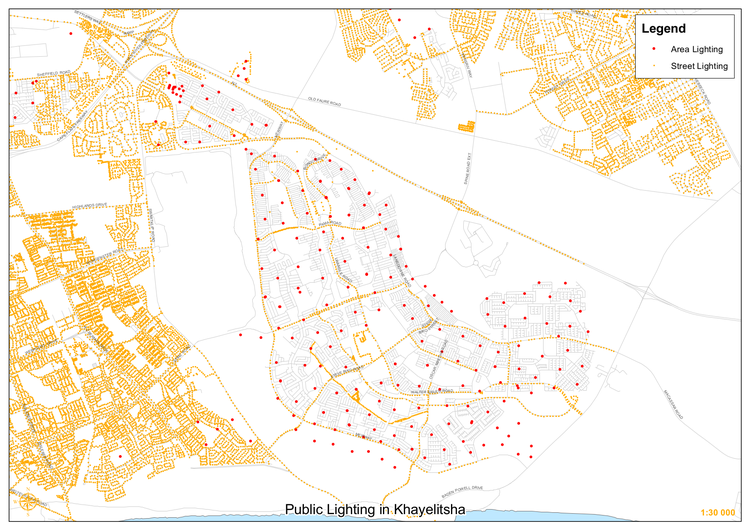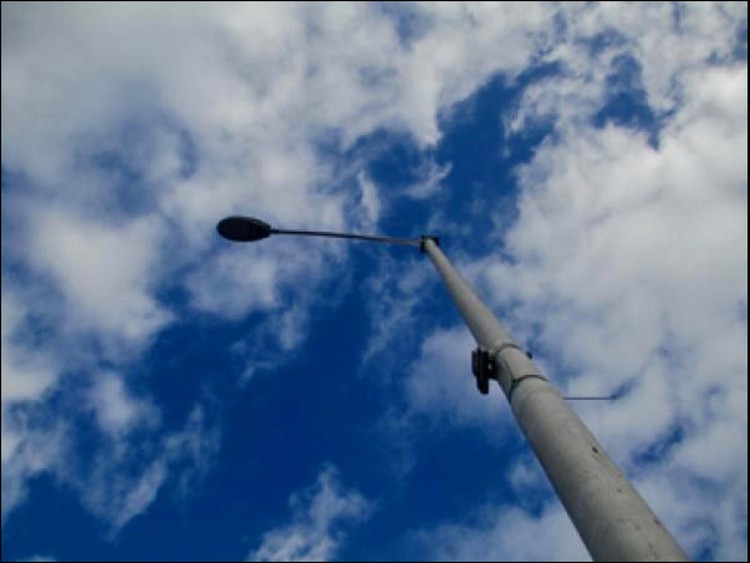Street lighting in Khayelitsha and Nyanga – a crime story
“You can never send your child to the shop after 7pm. Parents live in fear.”
On Saturday, the Social Justice Coalition (SJC) presented its detailed report on the need for better lighting in Khayelitsha and Nyanga at the Isivivana community centre.
The research report stated “there is no doubt that inadequate lighting is a security issue”. It follows findings and recommendations by the Khayelitsha Commission of Inquiry chaired by Justice Kate O’Regan and Advocate Vusi Pikoli in 2014. The Commission was established to investigate the breakdown of relations between the community of Khayelitsha and the South African Police Service (SAPS).
The problem of poorly lit areas and streets in Cape Town’s townships was highlighted by residents during the hearings.
The City of Cape Town in its Design and Management Guidelines for a Safer City acknowledges that “good lighting is one of the most effective means of increasing levels of safety and deterring crime”.
The SJC is calling on the City to “move forward on developing plans and a budget” in order to alleviate the problem.
GroundUp spoke to a few of the community leaders and activists about their concerns.
Martin Makasi, chairperson of the Cape Town Community Police Forum, said: “Nyanga is dark at night … Fixing lights would reduce crime significantly.”
Dumisani Qwebe, deputy chairperson of the Nyanga Community Police Forum, said: “You can never send your child to the shop after 7pm. Parents live in fear for their children.”
Qwebe said that going to the toilet at night meant risking one’s safety. “Some parents keep five-litre buckets [in their shacks] to use at night to relieve themselves,” he said.
According to the latest crime statistics, Nyanga had 279 murder cases in 2016, the highest number of reported murders recorded in a single precinct in the country. It also had the most number of reported sexual offences (351) and assaults (1,053) in the Western Cape.
Qwebe said that the Nyanga police station sent a monthly report to the Department of Community Safety describing some of the station’s challenges. These included a shortage of working street lights and police vehicles, and the increased prevalence of people seeking shelter at the station. “There is no progress,” he said about the City’s response to the Police Forum’s reports. “We feel very disappointed.”
To give people a visual idea of the problem of lighting in the two communities, the SJC report included two maps from the City identifying area lighting and street lighting.
According to the City’s guidelines, “high-mast spotlights [area lights] that cast dark shadows” are less effective than street lighting. The guidelines also state that “effective public lighting” requires lighting on poles to be about three metres high and to be placed at intervals of eight to ten metres.
The map displaying public lighting in Khayelitsha shows that there are mostly area lights in the central area and not as many street lights. In Nyanga, the map includes the Nyanga police precinct boundary in black. Within this boundary, the number of street lights are more than eight to ten metres apart with several areas only having area lights.


In response to questions from GroundUp, Xanthea Limberg, Mayoral Committee Member for Informal Settlements, Utilities and Energy, said: “The City is confident that most of Khayelitsha and Nyanga are covered by either street or high-mast lighting. The City is working together with the community and SAPS to identify areas which are not lit and to then see whether it is possible to erect street- or high-mast lighting in these areas.”
Limberg said that because electricity in Khayelitsha was supplied by Eskom, any changes or applications for lighting needed to go through the company.
“They have agreed on a way forward and have identified certain areas such as high-transit routes and are planning, where possible, to install further lighting,” she said.
Five years after GroundUp first reported on the lack of proper street lighting in Khayelitsha and Nyanga, it remains an issue for these communities.
Support independent journalism
Donate using Payfast

Don't miss out on the latest news
We respect your privacy, and promise we won't spam you.
© 2017 GroundUp. 
This article is licensed under a Creative Commons Attribution-NoDerivatives 4.0 International License.
You may republish this article, so long as you credit the authors and GroundUp, and do not change the text. Please include a link back to the original article.

